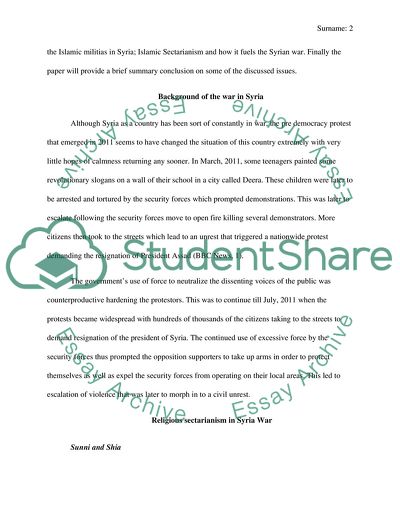Cite this document
(Islam and Violence in Syria Essay Example | Topics and Well Written Essays - 3000 words, n.d.)
Islam and Violence in Syria Essay Example | Topics and Well Written Essays - 3000 words. https://studentshare.org/religion-and-theology/1881217-islam-and-violent-in-syria
Islam and Violence in Syria Essay Example | Topics and Well Written Essays - 3000 words. https://studentshare.org/religion-and-theology/1881217-islam-and-violent-in-syria
(Islam and Violence in Syria Essay Example | Topics and Well Written Essays - 3000 Words)
Islam and Violence in Syria Essay Example | Topics and Well Written Essays - 3000 Words. https://studentshare.org/religion-and-theology/1881217-islam-and-violent-in-syria.
Islam and Violence in Syria Essay Example | Topics and Well Written Essays - 3000 Words. https://studentshare.org/religion-and-theology/1881217-islam-and-violent-in-syria.
“Islam and Violence in Syria Essay Example | Topics and Well Written Essays - 3000 Words”. https://studentshare.org/religion-and-theology/1881217-islam-and-violent-in-syria.


